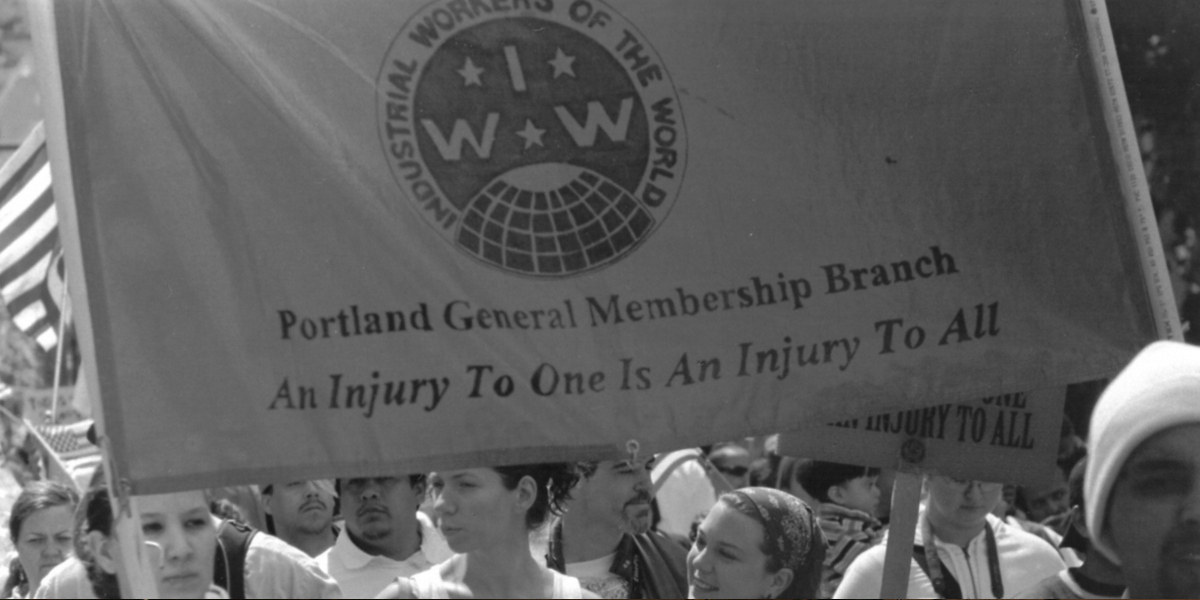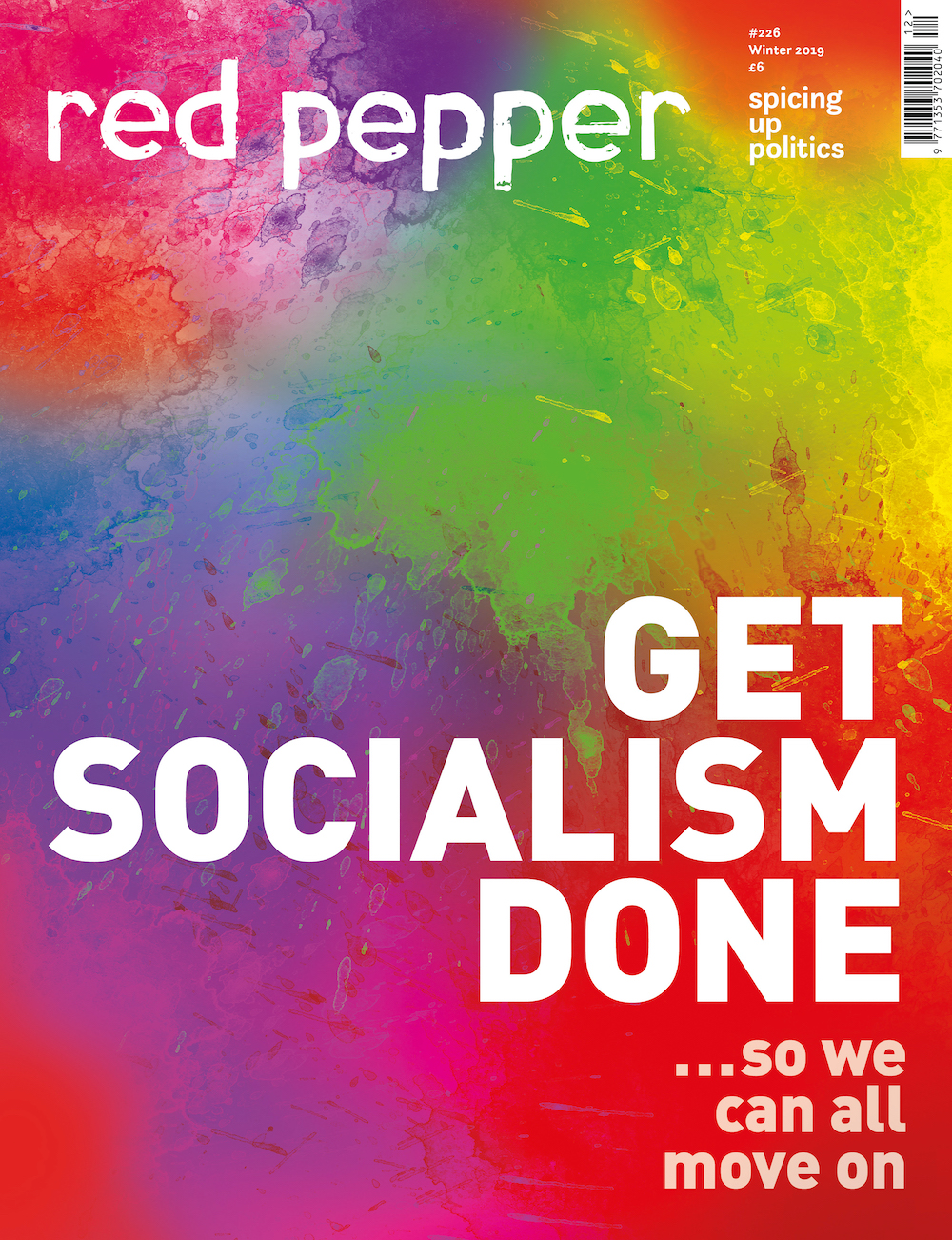Founded in 1905, the Industrial Workers of the World (IWW, Or ‘Wobblies’) was once considered the protagonist of the American class struggle. The union emerged out of a conflict with one of the largest worker’s institutions at the time, the American Federation of Labor. Radical thinkers affiliated with the Socialist and Socialist Labor Parties, along with leading trade unionists, felt that the union had taken a reformist stance toward capitalism and pursued an exclusionary policy toward “unskilled” labourers and migrant workers.
What was needed was a fighting union, that wouldn’t make needless concessions to the ruling class. A union that would try to bring all workers into the struggle, regardless of profession or race. This historical necessity is also a present one. We still direly need a radical and cohesive instrument of class struggle.
The union’s first ten years proved considerably successful, so much so that it took massive state repression to quell the movement. Though its numbers are now diminished, the IWW retains strongholds around the world, its theory and practice retaining relevance for contemporary struggles. In 2016, IWW activists organised the largest prison strike in American history, and as strikes hit nearly all major industries of the UK, the possibility of building one cohesive movement for justice again raises its head.
The task of creating a coordinated workers’ movement will demand unity, solidarity and a mutual recognition of the structural and cultural modes of oppression confronting each worker personally and collectively. To effect this, we need a basis for understanding the shared injuries inflicted on the working class by capitalism, a democratic body to coordinate our efforts, and a method for the critique of half-measures and compromise. Ultimately, we need one large union to link up the smaller struggles.
One big union
‘The trade unions foster a state of affairs which allows one set of workers to be pitted against another set of workers in the same industry, thereby helping defeat one another in wage wars.’ So says the Preamble to the IWW Constitution. As an alternative, the author proposes the creation of ‘One Big Union’ in which ‘members in any one industry, or in all industries if necessary’ are able to ‘cease work whenever a strike or lockout is on in any department thereof, thus making an injury to one an injury to all.’ The principle of working-class people organising not as employees of separate industries but as workers as such, is perhaps the most significant contribution of Marx, and has been kept alive by the Wobblies.
James Connolly, early theorist of the IWW, similarly argued that without the entirety of the working class organising collectively, each individual struggle would be doomed to failure. In his essay Industrial and Political Unity, he makes clear that strikes within one section of union workers can easily be broken by other card-carrying union workers. For instance, during a subway strike in New York, workers walked out en masse, yet workers in adjacent unions did not.
‘It was not the scabs,’ he wrote, ‘who turned the scale against the strikers’ but rather ‘the engineers in the powerhouses which supplied the electric power to run the railway cars, and without whom all the scabs combined could not have run a single trip.’ Industrial incoherence fostered by some of the larger, bureaucratic trade unions can, however, be overcome, by bringing together the entire working class into one broad-tent institution. As strikes today crop up at a pace unprecedented for twenty-first century Britain, it is now more important than ever to unite and coordinate the struggle for a better world.
An injury to all
The IWW is clear in its collective belief that an attack upon the rights of one worker by an employer represents an act of aggression against the entire class of workers. In the same way, solidarity forged between any two workers represents an awakening of class consciousness that can further the cause of the entire class.
The Preamble continues ‘by organising industrially we are forming the structure of the new society within the shell of the old.’ It is because they have this knowledge in mind, coupled with the belief that an injury to one is an injury to all, that means IWW reps fight for their fellow workers with a dedication and tenacity that is often quashed by larger, bureaucratised worker’s institutions, such as the professional unions and mainstream parties.
United and coordinated struggle
The value of the IWW is further demonstrated by its willingness to do what many unions and professional associations do not: organise the unorganised. Precarious workers, the unemployed and disabled workers feature heavily in IWW organising strategy. In contrast they are often overlooked by those unions content only to fight for members with stable employment, capable of paying regular dues to fund the salaries of union bureaucrats.
Our most important task is building up the Left opposition to what will likely be a Labour government in the near future
The 2019 Deliveroo strikes, organised with IWW and Independent Workers Union of Great Britain (IWGB) support, are an example of the work done by IWW activists to bring union militancy to the most insecure workers in the economy. The process of bringing the entire working class into the struggle for a better world means, as one striking rider said at the time, converting the struggle in individual areas into one ‘united and coordinated war.’
This means we must bring our message to all members of the class, and an organisation must exist to carry out that work – the IWW aspires to be that organisation. If the current strike wave is to be translated into meaningful political change, all committed socialists must be involved in the process of bringing separate struggles into one great leap toward the democratic, egalitarian future.
Parliamentary socialism
Much of what Helen Keller wrote in Why I Became an IWW (1916), remains highly relevant today. The American Socialist Party at the time, she claimed, had become too slow, too mired in ‘the political bog’. These stagnant conditions, she reasoned, could be overcome only by radical, rank-and-file action from below. In our own time and place, as the Tory party faces imminent catastrophe, our most important task is the building up of the Left opposition to what will likely be a Labour government in the near future.
As revolutionaries seeking the replacement of capitalism, the IWW must serve as the conscious minority within the working-class movement, pushing union leaders and bureaucrats steadily in line with an increasingly radicalised rank-and-file. A cell of organised workers, even in relatively miniscule numbers, can prove capable of pushing for cohesive and strategic left-wing action, of turning the tides on the bureaucratic-socialist consensus among political and union leaders.
As socialists, we know that parliamentarianism can only go so far toward the achievement of our aims. The Preamble sums up this Marxist truism succinctly and powerfully – ‘it is the historic mission of the working class to do away with capitalism. The army of production must be organised, not just for everyday struggle with capitalists, but also to carry out production when capitalism shall have been overthrown.’










